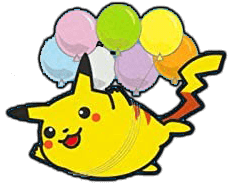Navigation
(Click the flying Pikachu to return to the top)
Introduction
Pokémon is the highest-grossing franchise in the world  and needs little introduction. I've been a fan of Pokémon for almost my entire life. I was
aware of the series before, but my first true introduction was in 3rd grade. We had a game day where we were allowed to bring board games and video
games to school. One of my friends brought her Gameboy Advance and let me play a little on her Pokémon FireRed save. I remember freaking out because her Clefairy
was poisoned and I didn't realize that was why the screen was shaking. I thought I accidentally glitched her game or something lol. Anyway, after that
I fell in love. During recess, we would pretend to be Pokémon. My favorite at the time was Ponyta, because I was also a horse girl lmao. Other favorites included Vulpix
and Growlithe. I loved Fire types! One of the boys in my class even let me read his chapter-book novelization of the show.
and needs little introduction. I've been a fan of Pokémon for almost my entire life. I was
aware of the series before, but my first true introduction was in 3rd grade. We had a game day where we were allowed to bring board games and video
games to school. One of my friends brought her Gameboy Advance and let me play a little on her Pokémon FireRed save. I remember freaking out because her Clefairy
was poisoned and I didn't realize that was why the screen was shaking. I thought I accidentally glitched her game or something lol. Anyway, after that
I fell in love. During recess, we would pretend to be Pokémon. My favorite at the time was Ponyta, because I was also a horse girl lmao. Other favorites included Vulpix
and Growlithe. I loved Fire types! One of the boys in my class even let me read his chapter-book novelization of the show.
Unfortunately, my mother was one of Those Christians™ who thought that Pokémon was satanic, so I was forbidden
from playing the games or watching the show. However, my dad sneakily bought me LeafGreen for my birthday. My mom never found out because
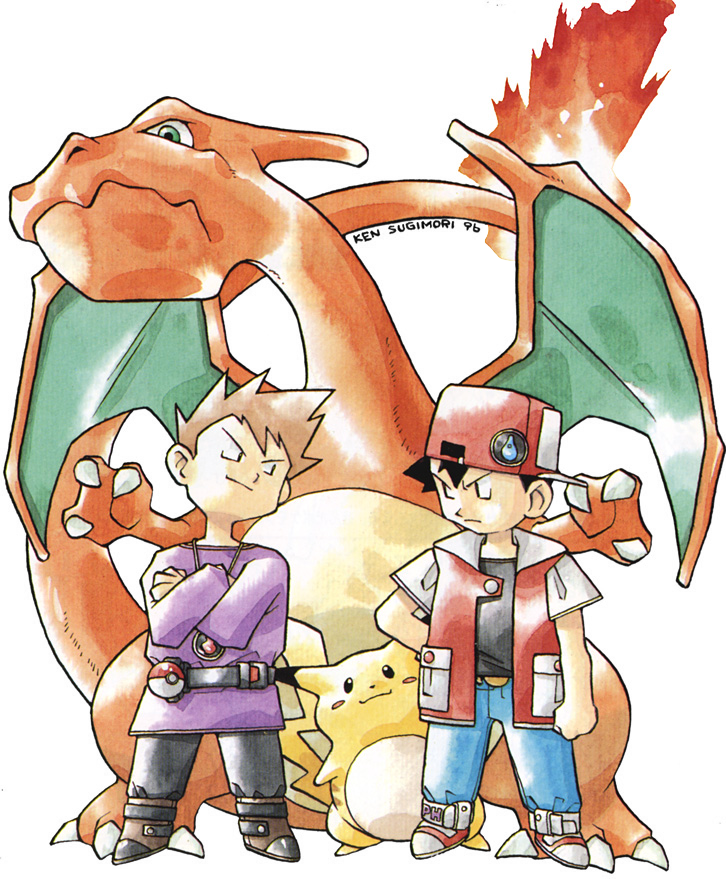 I hid the game under my bed. Later on, her stance towards Pokémon would relax but for me, Pokémon was always something that was slightly forbidden and thus
exciting. Nothing compares to my first playthrough in LeafGreen. Everything was new. Each encounter was exciting. I remember spending hours grinding to beat Brock and Misty. I
chose Charmander and was underleveled, so I lost quite a few times to both of them. I still hate Starmie to this day lmao. I have fond memories of getting Arena Trapped by
Dugtrio in Diglett's Cave and getting lost in Silph Co. Later on, I spent hours trying over and over to make my way through the Elite Four and beat the rival character
(I named him Gary). I was elated when I realized there was more to explore post-game (Sevii Islands + Cerulean Cave). That first playthrough was truly special. Since then,
Pokémon has always held a special place in my heart. I don't think any other media has invoked such wide-eyed wonder and delight in me. As a kid, I dreamed of becoming a Pokémon
trainer and exploring the world with my very own Pokémon by my side. If I had to choose a fantasy world to live in, the world of Pokémon would still be high on my list.
I hid the game under my bed. Later on, her stance towards Pokémon would relax but for me, Pokémon was always something that was slightly forbidden and thus
exciting. Nothing compares to my first playthrough in LeafGreen. Everything was new. Each encounter was exciting. I remember spending hours grinding to beat Brock and Misty. I
chose Charmander and was underleveled, so I lost quite a few times to both of them. I still hate Starmie to this day lmao. I have fond memories of getting Arena Trapped by
Dugtrio in Diglett's Cave and getting lost in Silph Co. Later on, I spent hours trying over and over to make my way through the Elite Four and beat the rival character
(I named him Gary). I was elated when I realized there was more to explore post-game (Sevii Islands + Cerulean Cave). That first playthrough was truly special. Since then,
Pokémon has always held a special place in my heart. I don't think any other media has invoked such wide-eyed wonder and delight in me. As a kid, I dreamed of becoming a Pokémon
trainer and exploring the world with my very own Pokémon by my side. If I had to choose a fantasy world to live in, the world of Pokémon would still be high on my list.

The State of Pokémon Today
 However, the state of modern-day Pokémon leaves much to be desired. The cost of becoming such a lucrative franchise, I suppose. The games seem to exist solely to push merchandise.
According to this infographic, ~66% of Pokémon's
total revenue is from merchandise sales. In order to feed the ravenous maw that is merchandise production, Game Freak, the developers of the Pokémon games, needs to maintain a
breakneck release schedule. On average, there are only 3.25 years between each generation. (A generation is a term used for grouping Pokémon games. Each generation includes a 'flagship'
game that has a new region and new Pokémon, as well as miscellaneous side games such as remakes. Whenever a new 'flagship' game is released, the categorization moves to the next generation.)
The longest gap is 4 years. Since Gen V (2010), there have been 3 years between each subsequent generation, as you can see from this Wikipedia screenshot I professionally labeled in MS Paint.
Presumably, Gen X will be released around 2025.
However, the state of modern-day Pokémon leaves much to be desired. The cost of becoming such a lucrative franchise, I suppose. The games seem to exist solely to push merchandise.
According to this infographic, ~66% of Pokémon's
total revenue is from merchandise sales. In order to feed the ravenous maw that is merchandise production, Game Freak, the developers of the Pokémon games, needs to maintain a
breakneck release schedule. On average, there are only 3.25 years between each generation. (A generation is a term used for grouping Pokémon games. Each generation includes a 'flagship'
game that has a new region and new Pokémon, as well as miscellaneous side games such as remakes. Whenever a new 'flagship' game is released, the categorization moves to the next generation.)
The longest gap is 4 years. Since Gen V (2010), there have been 3 years between each subsequent generation, as you can see from this Wikipedia screenshot I professionally labeled in MS Paint.
Presumably, Gen X will be released around 2025.
In modern game development, 3 years between games is somewhat fast. Nowadays, AAA games can take 5+ years to develop. (Whether or not
modern Pokémon games can be classified as 'AAA' is debatable, but regardless, Pokémon is a flagship series for Nintendo. Personally, I would argue that from Sword & Shield onwards, they are AAA games.)
However, not only does Game Freak develop core games, but they are also in charge of developing remakes and DLC. From the timeline above, only one of the entries (Brilliant Diamond/Shining Pearl) wasn't
developed by Game Freak. This means that since Pokémon's inception, Game Freak has released a new Pokémon entry almost every year and sometimes twice a year. Game Freak's output is absolutely insane.
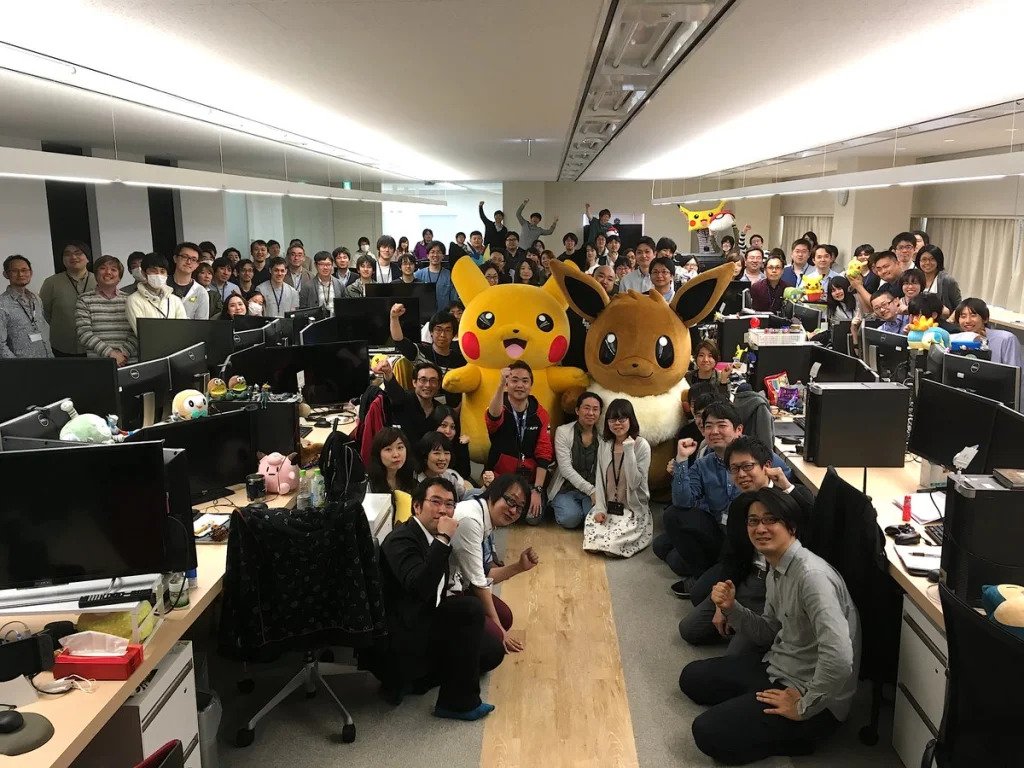
In 2013, Pokémon made the transition from 2D pixel graphics to 3D. The transition was a little rough. Game Freak's traditional game design for Pokémon didn't necessarily translate to 3D. The linear,
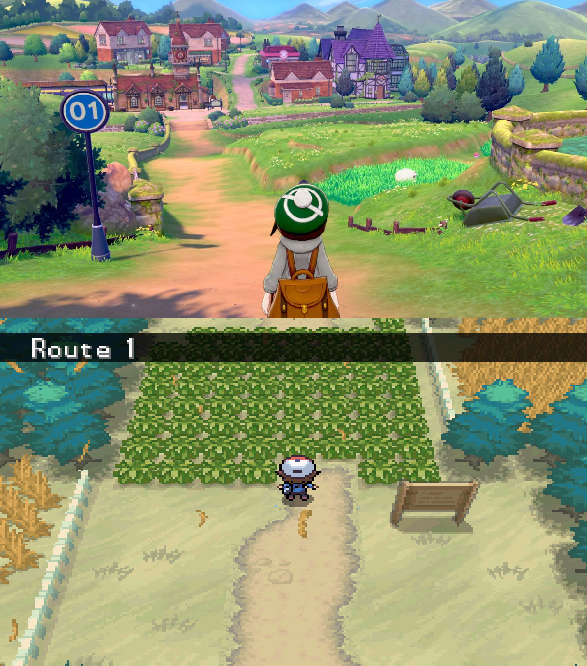 geometric routes of the 2D games felt boring and stifling. Old-fashioned, outdated. The charming pixel designs of Pokémon needed to be translated into 3D. Environmental assets, characters, Pokémon, etc. all
needed to be modeled and animated in 3D. Game Freak needed to learn how to work with a new game engine and all of the aspects that come with 3D games (physics, lighting, real-time graphics rendering, etc.),
all while making sure to optimize the performance of their games. Remember, prior to this, all core
Pokémon games were 2D. It's far easier (and cheaper) to make a 2D game. Game Freak needed to learn how to adapt to 3D while making games rapid-fire for the highest grossing franchise in history.
With the release of the Nintendo Switch, expectations for new Pokémon games were at an all-time high. Reception to the 3DS games was generally positive; however, many critiqued the games for playing it safe and
not taking full advantage of the capabilities of a 3D game. And so in 2019, the new Pokémon games trended towards large open areas before becoming fully open world in 2020, with The Crown Tundra DLC. The main
Switch games, Sword/Shield and Scarlet/Violet, are some of the most ambitious Pokémon games to date. They are also the most heavily criticized.
geometric routes of the 2D games felt boring and stifling. Old-fashioned, outdated. The charming pixel designs of Pokémon needed to be translated into 3D. Environmental assets, characters, Pokémon, etc. all
needed to be modeled and animated in 3D. Game Freak needed to learn how to work with a new game engine and all of the aspects that come with 3D games (physics, lighting, real-time graphics rendering, etc.),
all while making sure to optimize the performance of their games. Remember, prior to this, all core
Pokémon games were 2D. It's far easier (and cheaper) to make a 2D game. Game Freak needed to learn how to adapt to 3D while making games rapid-fire for the highest grossing franchise in history.
With the release of the Nintendo Switch, expectations for new Pokémon games were at an all-time high. Reception to the 3DS games was generally positive; however, many critiqued the games for playing it safe and
not taking full advantage of the capabilities of a 3D game. And so in 2019, the new Pokémon games trended towards large open areas before becoming fully open world in 2020, with The Crown Tundra DLC. The main
Switch games, Sword/Shield and Scarlet/Violet, are some of the most ambitious Pokémon games to date. They are also the most heavily criticized.
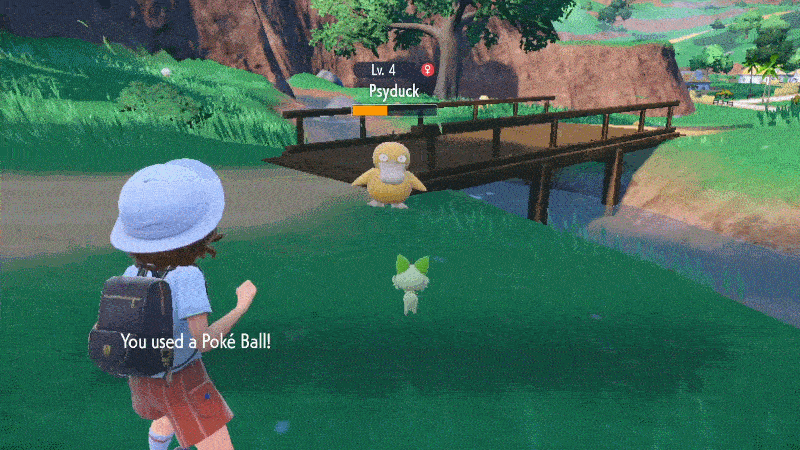
 of each other. The lighting is poorly done and makes the already low quality textured world look worse. The cutscenes are awkward and stilted. Perhaps worst of all, it is very clear that Pokémon Scarlet and Violet
are unfinished games. All of the aforementioned issues are symptoms of a game rushed to release. Aspects of Sword/Shield also came across as unfinished, but it is especially notable in Scarlet/Violet.
of each other. The lighting is poorly done and makes the already low quality textured world look worse. The cutscenes are awkward and stilted. Perhaps worst of all, it is very clear that Pokémon Scarlet and Violet
are unfinished games. All of the aforementioned issues are symptoms of a game rushed to release. Aspects of Sword/Shield also came across as unfinished, but it is especially notable in Scarlet/Violet.
There are a lot of small details in Scarlet/Violet, such as clothes having different brands. It's a nice touch and adds to the worldbuilding, but it seems odd when compared to other parts of the game that lack that same
attention to detail. It's very easy to tell where they had to cut corners. For instance, there is a noticeable lack of interior areas in Violet. Aside from certain exceptions (such as your house, the school, gym lobbies, one
singular sandwich shop chain, etc.), you can't really go into any of the buildings. Even the Pokémon Center is no longer a building but rather a kiosk. This is a shame because the interiors that do exist are quite nicely
decorated and look good. The fact that you can only go into one type of sandwich shop is bizarre, especially when other stores and restaurants exist. However, for these, when you 'go' into the building, only a menu pops
up that you can order from, rather than a physical interior for you to explore. Once you exit that menu, your character also exits the building, which is pretty lame. Unused interiors have been datamined, suggesting that they
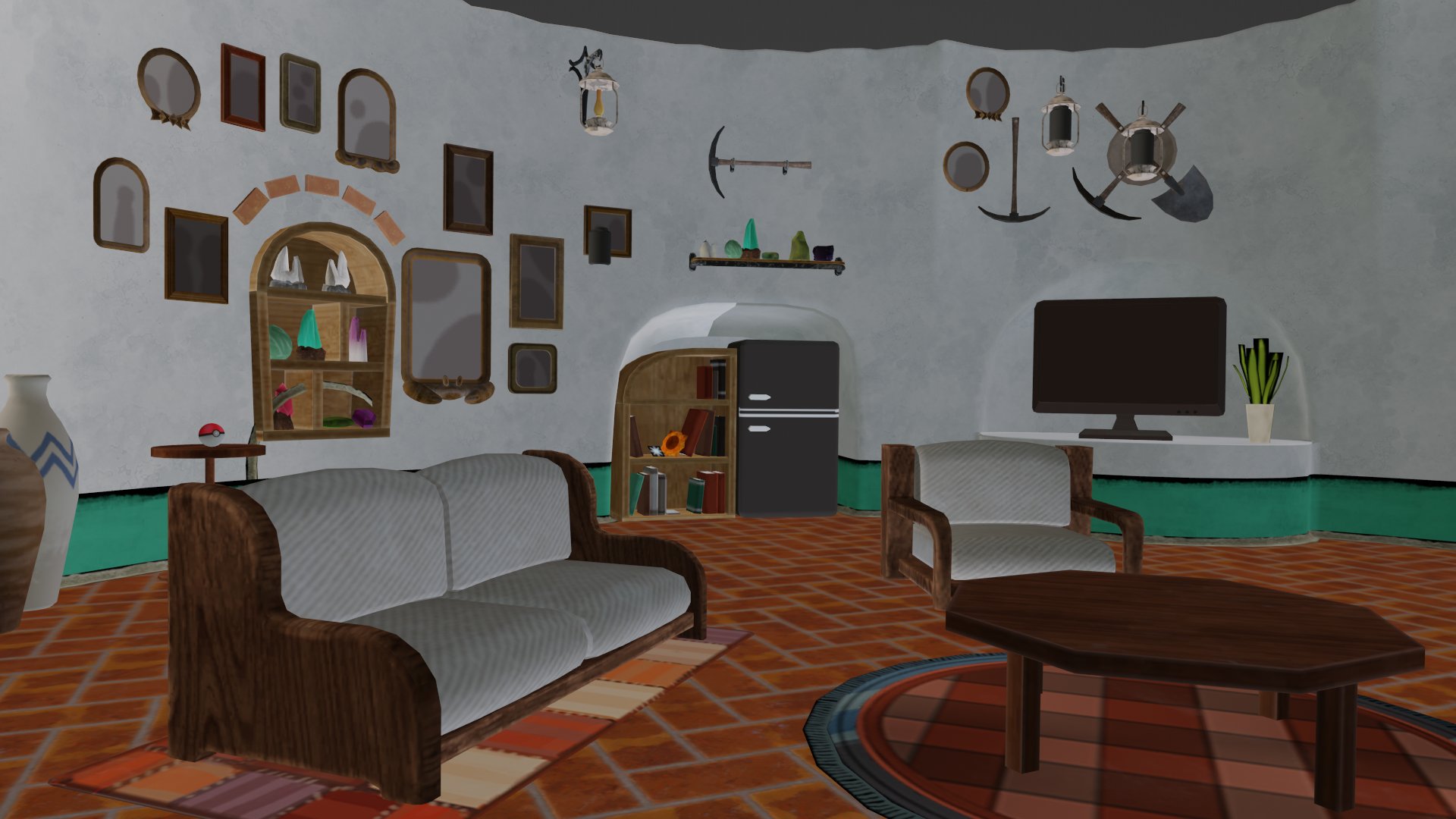
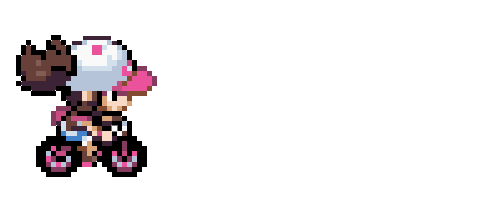
My Opinion on Modern Pokémon Games
 Now, Pokémon games aren't exactly known for being super polished and bug-free. The earlier generations have quite a few infamous bugs (hello, MissingNo.) but are
still highly regarded. So, what changed? When did the series go downhill? In my opinion, Pokémon's decline can be traced back to 2016, with the release of Pokémon Go. However, you can see the warning signs
begin with Pokémon's transition to 3D in 2013. While X and Y are generally well-regarded games as they introduced the new Fairy type and probably the most interesting of Pokémon's battle gimmicks (Mega Evolution), X/Y are still flawed.
X/Y lack a proper post-game, have a nonsensical plot, blatantly pander to nostalgia (Kanto), and mark the decline in the games' difficulty. Pokémon games have never been super hard, but the earlier ones still provided a challenge,
especially for newcomers. You had to either level up your Pokémon or have better type matchups. However, X/Y introduced the start of the team-wide Experience Share (which was thankfully optional, unlike in later games). Perhaps more egregiously, a lot of
Now, Pokémon games aren't exactly known for being super polished and bug-free. The earlier generations have quite a few infamous bugs (hello, MissingNo.) but are
still highly regarded. So, what changed? When did the series go downhill? In my opinion, Pokémon's decline can be traced back to 2016, with the release of Pokémon Go. However, you can see the warning signs
begin with Pokémon's transition to 3D in 2013. While X and Y are generally well-regarded games as they introduced the new Fairy type and probably the most interesting of Pokémon's battle gimmicks (Mega Evolution), X/Y are still flawed.
X/Y lack a proper post-game, have a nonsensical plot, blatantly pander to nostalgia (Kanto), and mark the decline in the games' difficulty. Pokémon games have never been super hard, but the earlier ones still provided a challenge,
especially for newcomers. You had to either level up your Pokémon or have better type matchups. However, X/Y introduced the start of the team-wide Experience Share (which was thankfully optional, unlike in later games). Perhaps more egregiously, a lot of
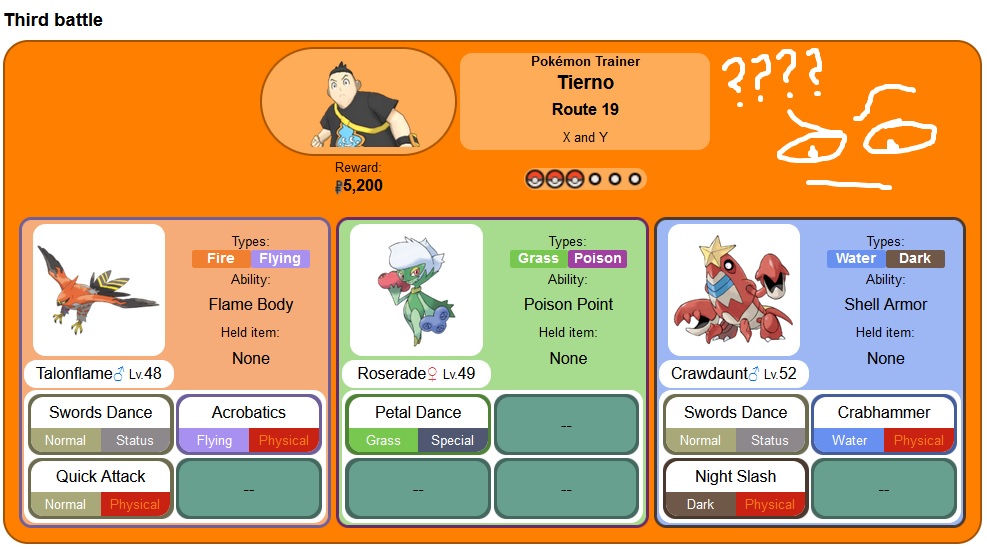 the battles in X/Y were easy because many important trainers (rivals, villains, Gym Leaders, etc.) had incomplete movesets over the course of the game. This may be understandable in lower level areas. But the final Gym Leader having
a Pokemon with only three moves or Tierno's Roserade only knowing one move is ridiculous. Still, even with these flaws and the criticisms over Omega Ruby/Alpha Sapphire cutting the Battle Frontier, the mainline Gen VI games were still
well received. Gen VII is when things get more divisive.
the battles in X/Y were easy because many important trainers (rivals, villains, Gym Leaders, etc.) had incomplete movesets over the course of the game. This may be understandable in lower level areas. But the final Gym Leader having
a Pokemon with only three moves or Tierno's Roserade only knowing one move is ridiculous. Still, even with these flaws and the criticisms over Omega Ruby/Alpha Sapphire cutting the Battle Frontier, the mainline Gen VI games were still
well received. Gen VII is when things get more divisive.
Personally, I don't like Sun/Moon and I've never played Ultra Sun/Ultra Moon. Aside from Lillie, I didn't really like any of the characters. I found playing Pokémon Moon to be an incredibly tedious experience due to all of the unskippable
cutscenes. When compared to Mega Evolution, I thought Z-Moves were really boring. That being said, I can appreciate Sun/Moon for breaking away from the traditional Gym structure of previous generations. Game Freak was trying
something new to shake things up, which I applaud them for. Pokémon Sun and Moon are fine games... just fine. But who cares about Sun/Moon when a few months earlier, in July 2016, Pokémon Go was released.


Just looking at the timeline, the yearly Pokémon releases didn't start until 2016. Every generation prior had a gap year. Ultra Sun and Ultra Moon were probably well into development when Pokémon Go released, but I think the resounding success
of the game made Game Freak want to capitalize on the hype. While finishing up work on Ultra Sun/Ultra Moon, I believe that Game Freak quickly pivoted to make their Pokémon Go spinoffs. Let's Go, Eeevee! and Let's Go, Pikachu! were targeted
 towards the Pokémon Go demographic while also shrewdly pandering to the nostalgia of long-time fans by being Gen I remakes.
This article also supports my hypothesis, as it states that the two games only took about 2 years to develop, which matches the timeline. I'm curious to know if Eevee/Pikachu were Game Freak's idea, or if they were games mandated by
Nintendo or The Pokémon Company. I don't think Nintendo is too involved with Game Freak, but perhaps with the success of Pokémon Go, they might have pitched the spin-off idea to Game Freak. I just think it's curious that Eevee/Pikachu appear
to be one-offs. Game Freak hasn't made a game with the same style or gameplay since then, which leads me to believe that they might not have been the ones with the original idea.
towards the Pokémon Go demographic while also shrewdly pandering to the nostalgia of long-time fans by being Gen I remakes.
This article also supports my hypothesis, as it states that the two games only took about 2 years to develop, which matches the timeline. I'm curious to know if Eevee/Pikachu were Game Freak's idea, or if they were games mandated by
Nintendo or The Pokémon Company. I don't think Nintendo is too involved with Game Freak, but perhaps with the success of Pokémon Go, they might have pitched the spin-off idea to Game Freak. I just think it's curious that Eevee/Pikachu appear
to be one-offs. Game Freak hasn't made a game with the same style or gameplay since then, which leads me to believe that they might not have been the ones with the original idea.
I love Pokémon, and this franchise will always be incredibly nostalgic and meaningful to me. However, I can't help but wonder if I'm outgrowing it. Is the problem me, or is it the games? The past few generations have been incredibly 'meh' to
me. I don't really remember much from Gen VII onward. The games are largely forgettable and lackluster.  There are some good ideas but poor execution due to the games being constantly rushed. I've said before that I blame Pokémon Go for this
reason, but really, I'm not entirely sure WHO to blame. Is it Game Freak's fault? Perhaps Nintendo or The Pokémon Company? Who knows, but Pokémon Go does make a convenient scapegoat. Or perhaps it served as a catalyst. As I mentioned
before, the yearly releases didn't start until the year it came out. I think the game's propulsive success led to the mandate for yearly releases. Not only did Pokémon Go need material from the mainline games so that it could keep releasing
new content, but the Pokémon franchise as a whole has never been bigger. And it's only natural to want it to become even more successful, even more profitable, even if the capitalistic desire for forever increasing profits isn't sustainable.
From the dismal technical quality of Scarlet/Violet, the cracks are clearly showing. But will anything change? Scarlet/Violet faced massive backlash online. They're the lowest rated games in the mainline series and yet they sold 22 million
copies worldwide, 10 million of those within the first three days of release.
There are some good ideas but poor execution due to the games being constantly rushed. I've said before that I blame Pokémon Go for this
reason, but really, I'm not entirely sure WHO to blame. Is it Game Freak's fault? Perhaps Nintendo or The Pokémon Company? Who knows, but Pokémon Go does make a convenient scapegoat. Or perhaps it served as a catalyst. As I mentioned
before, the yearly releases didn't start until the year it came out. I think the game's propulsive success led to the mandate for yearly releases. Not only did Pokémon Go need material from the mainline games so that it could keep releasing
new content, but the Pokémon franchise as a whole has never been bigger. And it's only natural to want it to become even more successful, even more profitable, even if the capitalistic desire for forever increasing profits isn't sustainable.
From the dismal technical quality of Scarlet/Violet, the cracks are clearly showing. But will anything change? Scarlet/Violet faced massive backlash online. They're the lowest rated games in the mainline series and yet they sold 22 million
copies worldwide, 10 million of those within the first three days of release.
Like some other franchises (Animal Crossing, The Sims, etc.), I feel like Pokémon is suffering from success. And there's no incentive to change. No matter how broken or low-quality the games are, they WILL sell millions of copies. I want to
play a new Pokémon game and feel a semblance of the wonder I felt as a child. I know that realistically speaking, nothing will ever replicate that feeling, but out of all of the new releases, Pokémon Legends: Arceus came the closest. It was such a departure from Game Freak's other
games and seeing the difference between PLA and Scarlet/Violet is depressing. It's clear from Scarlet/Violet that Game Freak isn't lazy. The studio has ambitions and wants to broaden the scope of the series, but they don't have the time to
successfully do so. I can only hope that in the future, Game Freak is given room to breathe and allowed the time needed to make a game they can be proud of. Or perhaps outsource the development of some of the games to other companies that
are more familiar with 3D game development. That way, Game Freak can chill a bit, and other studios can have their own take on Pokémon. As a long-time fan, I may never be fully satisfied with the new direction the series is taking, but that's fine.
I just want the new Pokémon games to be of higher quality. Newer fans deserve good games, even if I personally do not like them. I hope that the debacle of Gen IX is a one-off and that Gen X will be pushed back to 2026 to align with the 30th anniversary
of the series. I hope the next games will be decent, and I hope that I'll continue to enjoy Pokémon in the years to come.


